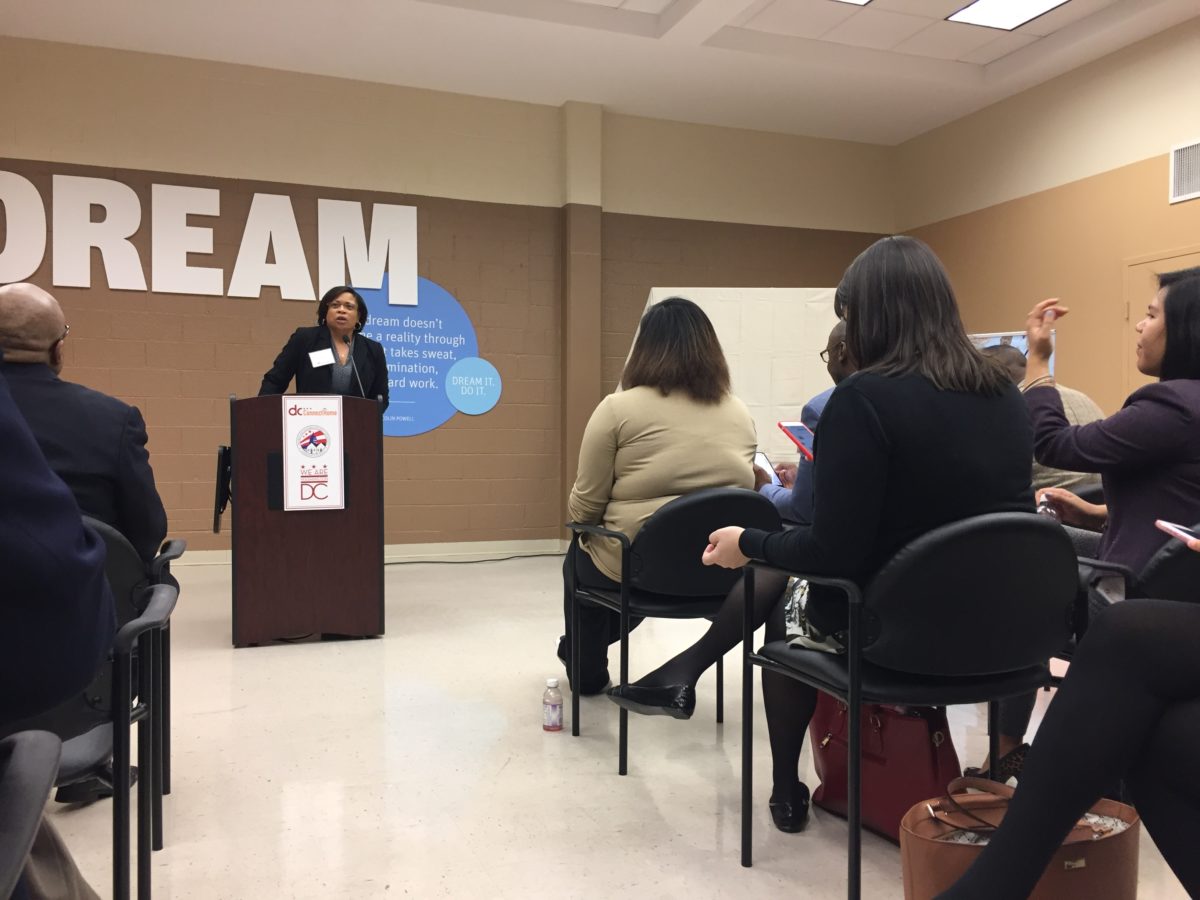On a blustery morning in late October, officials from D.C. government and the U.S. Department of Housing and Urban Development gathered in the D.C. Housing Authority’s Southwest Family Enhancement and Career Center to celebrate wireless internet.
Specifically, they were there to celebrate the fact that over 1,700 low income housing units have a brand-new wireless connection.
Happy Anniversary #dcconnecthome. @OCTODC @dccto @ConnectdotDC are proud to be partners. Read more here: https://t.co/0YuQobirko pic.twitter.com/uS5f0A4iQP
— DC Office of the CTO (@OCTODC) October 28, 2016
When dcConnectHome launched about a year ago, DCHA executive director Adrianne Todman told the gathered crowd, the “stretch goal” was to connect 1,500 units. At 1,785 units across 21 properties, Todman was proud to announce that dcConnectHome has, thus far, even exceeded its own wildest expectations.
dcConnectHome, for those unfamiliar, is one local chapter of the HUD initiative ConnectHome. ConnectHome, currently being run as a pilot program in 28 communities across the U.S., is part of the Obama Administration’s attempt to increase access to broadband — a public-private collaboration aimed at narrowing the digital divide.
ConnectHome doesn’t provide any federal funds, but it does help connect government agencies to private companies willing to donate time or resources. When the program launched, for example, Best Buy planned to offer free after-school technical training for students in DCHA housing and the College Board put free online SAT practice resources on the table. Other private-sector partners of the initiative include GitHub, PBS and more.
For dcConnectHome’s part, DCHA has managed to enable WiFi access in its units by tapping into and expanding the DC-Net broadband network, a publicly-owned network that is already used by the D.C. government, including DCHA. According to a fact sheet on dcConnectHome, “DC-Net amplified the existing internet connectivity at 21 of DCHA’s property management offices by establishing a wifi signal that reaches community spaces and households.”
Sure, 1,785 units is just a fraction of the approximately 8,000 units DCHA oversees across the District, as Todman herself was quick to point out. But it’s a start.
Flipping the switch for #dcConnectHome! pic.twitter.com/ORQWOR9RRw
— EveryoneOn (@EveryoneOn) October 28, 2016
But ConnectHome is not just about connectivity. For dcConnectHome specifically, connectivity is only the first of four strategic goals — the others include providing access to low-or-no-cost devices to access the internet, connecting residents to training opportunities and connecting residents to online information about jobs, college and more. While the one-year celebration focused mainly on the connectivity achieved, DCHA is working toward the other goals as well. We wrote about one dcConnectHome-related training program here.
Let’s see what year two brings.
Before you go...
To keep our site paywall-free, we’re launching a campaign to raise $25,000 by the end of the year. We believe information about entrepreneurs and tech should be accessible to everyone and your support helps make that happen, because journalism costs money.
Can we count on you? Your contribution to the Technical.ly Journalism Fund is tax-deductible.
Join our growing Slack community
Join 5,000 tech professionals and entrepreneurs in our community Slack today!
